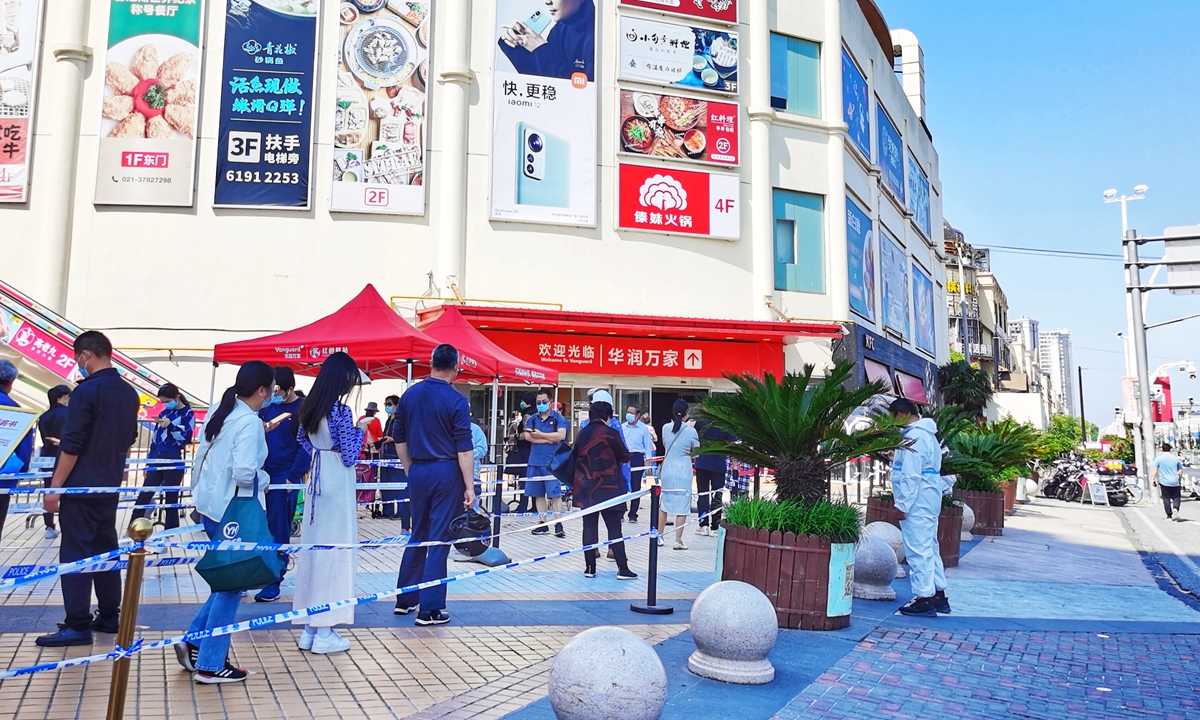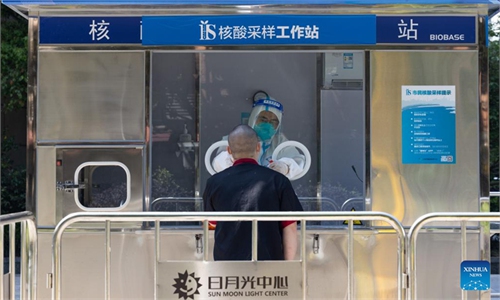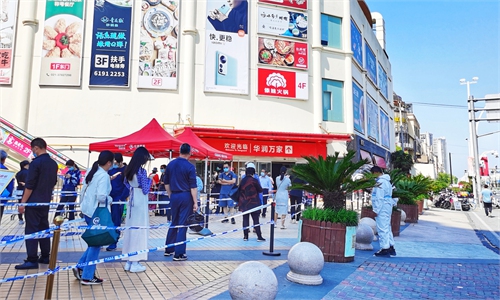Shanghai records lowest daily tally since March 24, may need fight at community level ‘till June 8’

Shanghai Photo: VCG
Shanghai's epidemic control has approached the light at the end of the tunnel as the mega-city has detected the lowest daily tally since March 24, and at least eight districts have basically cleared the coronavirus at the community level.
Epidemiologists said the cheerful sign proves the efficacy of China's dynamic zero-COVID policy, but the hard-won fruits should be further consolidated to avoid resurgence.
"The outbreak in Shanghai has shown a good trend and the viral transmission risk has been effectively curbed… Daily new cases have seen an obvious fall and fewer positive cases were found in areas beyond quarantine facilities, where the epidemic risk has been effectively controlled," Shanghai health authorities said on Wednesday.
Shanghai recorded 228 confirmed cases and 1,259 asymptomatic cases on Tuesday, the lowest tally since March 24. All the cases were found among quarantined groups, the Shanghai municipal health commission said on Wednesday.
Xuhui district became the latest to achieve dynamic zero-COVID at the community level, making districts that had seen zero cases in non-controlled regions to eight, local health commission said.
Shanghai experienced a dark moment in April when it saw more than 20,000 new infections in a single day. The decline in the daily tally indicates that previous epidemic restrictions were effective in containing COVID-19, a senior expert at the Chinese Center for Disease Control and Prevention told the Global Times on condition of anonymity.
Adhering to the dynamic zero-COVID policy with strictest and classified restrictions in key neighborhoods, as well as carrying out nucleic acid tests regularly - two essential methods - could bring the epidemic that has lasted about two months to an end, the expert noted.
Research by the Ruijin hospital affiliated to the School of Medicine, Shanghai Jiao Tong University predicted that by conservative estimates, Shanghai's fight against the epidemic at the community level may last until June 8, when the daily new cases would fall below 1,000.
Another model developed by Yao Maosheng, a professor at the College of Environmental Sciences and Engineering at Peking University, showed that by the end of May, the latest wave in Shanghai is likely to be contained, and the city will gradually lift lockdowns by then.
"I'm feeling good these days as more patients have been discharged from the hospitals and more makeshift hospitals have been shut down," a medical staffer who is working at the Shanghai New International Expo Centre makeshift hospital told the Global Times on Wednesday.
As of Tuesday, over 17.97 million residents were in areas classified as "precaution-level," which means that they could be allowed to move freely within certain regions at certain times, according to local authorities.
"We will further narrow restricted zones and expand precautionary zones, allowing more and more residents to step out of their homes and neighborhoods," Xu Shujie, an official from Shanghai, said at Wednesday's press conference.
Medical institutions in the city have gradually resumed services, but have yet to return to their pre-epidemic status.
Lu Hongzhou, head of Shenzhen's anti-epidemic expert team, told the Global Times on Wednesday that though Shanghai has seen a stable and improved epidemic trend, it still needs to consolidate the hard-won results to prevent resurgences in certain regions as COVID-19 restrictions are eased gradually.
Wu Huanyu from the Shanghai provincial CDC on Wednesday warned Shanghai to "stay alert and remain consistent in implementing previously enacted policies" to avoid an epidemic rebound.
Shanghai has also been making tailored one-to-one solutions for sealed-off areas after thorough study and scientific judgments, and sticking with strict measures in key regions, including old residential communities and urban villages.
Lu suggested resuming work and production in an orderly manner under the preventive and control measures, such as increasing high-frequency nucleic acid tests to detect COVID-19 positive cases earlier, and requiring residents to scan their QR codes before entering public venues.
In an article published in The Lancet titled "Shanghai's life-saving efforts against the current Omicron wave of the COVID-19 pandemic," epidemiologist Zhang Wenhong said that the city is "seeing the light at the end of the tunnel in this round of the epidemic."
Shanghai people welcome their coming emergence from this round of the epidemic, and the city's strict epidemic control measures bought more time for vaccination and bringing down elderly fatalities, Zhang said.



